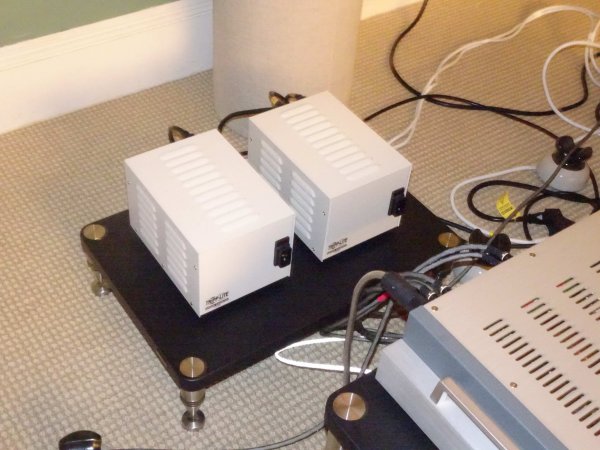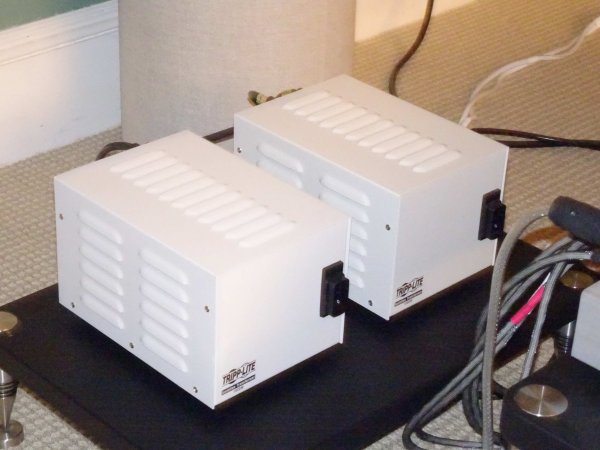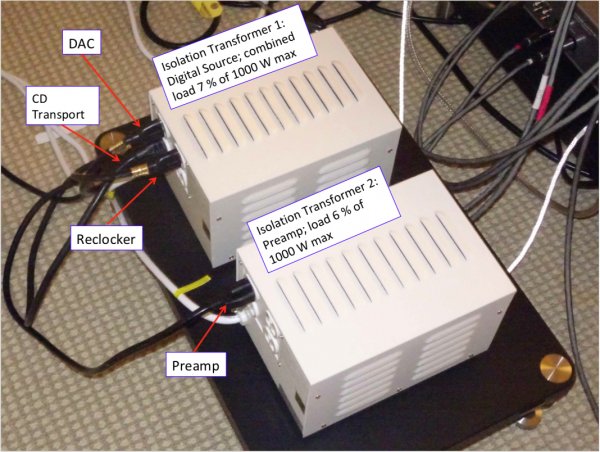Interesting post. I can’t agree that Al’s system never portrayed the sense of musicians in real space. In my opinion it was the biggest strength of his system (and room given I’ve experienced this with 3 different speakers and a variety of electronics).
I’m not sure it’s any better in that regard now.
Interesting indeed, Ian. For years I have been enjoying the sense of scale, the images, and the deep and expansive soundstage of Al's system. It was incredible, really. And yes, this carried over through different amps, speakers, and DACs. However, last night's listening experience was different. Those same images on that same stage were now much more realistic and reminiscent of what I hear live. I have been trying to describe why I think that is.
It is a difficult to describe in words, and I wish you had been there to join us, because Al and I spend a great deal of time describing and discussing what we were hearing and what might be the causes. I know that you heard his system last weekend, and that he had made these changes before then. You had mentioned to me that you thought the system was sounding really good now. Perhaps you listened for different things, or did not notice this aspect of the sound.
For me, it was immediately obvious. I have been fine tuning the set up of my own system for the last few months, and over time, I began to hear this very change in how the energy from the recording is transferred to the room through the speakers and the rest of the system. Often times, this energy never reaches the room because it is choked off by something in the system like filtering devices, power conditioners, certain footers, cables, power cords, support platforms. I heard all of these suck the life out of the music in my own system and some of those I visited. There seem to be all sorts of causes.
However, if this energy is somehow able to make it into the room, it is then either killed by absorption, or it is left to bounce all over the place and makes a mess of the sound. I discovered, with the help of ddk's advice, that the challenge is to manage this energy by careful positioning of the speakers and by how one chooses to furnish or otherwise treat the room's acoustics. Managing the energy is the key. I had a lot to learn and began my year of experiments and removing stuff from my system.
I have described in many posts how I chose to do this in my own system. Al heard my system a couple of weeks ago and I think appreciated the sense of natural resolution. Al and I learn a lot from each other and know the two systems pretty well. The most recent change Al made was to reposition his speakers so that they aim straight ahead. I had heard his system after he removed the giant panel and half of the TubeTraps from his front wall. I even heard his system briefly after I helped him to move his subwoofers closer to his speakers. Since that visit, he adjusted the setting on his subwoofer for better integration, and he straightened his speakers. That was all he did, but the sound is much improved, IMO.
I heard the change immediately. There was a new sense of life and energy to the music, and the presence of musicians on the stage in front of us was vastly improved relative to his former soundstage and imaging.. With more listening, it became clear that a few things are going on. There is more resolution, more information from the recording now in the room. Very low level information is more audible, clearer, and it is now unleashed and unrestricted (at least more so than before).
Perhaps it also has something to do with the better subwoofer integration. There is much more ambient hall information. Those great images and scale, and the width and breadth of the soundstage are still there, but now, they are more realistic sounding. There is more character to the images. I am not talking about the musicians per se, but rather the location of the origin of the sound. The quality of the sound conjures up images of musicians, but never did I "see" the instruments or the musicians. I simply heard a more realistic sound from the instruments in places, not spaces, on a virtual stage. Notes hung in the air, the silences were never empty and black. There was the sense that something was still there, even during pauses between the notes. Before these recent changes, there was more of a big empty black space devoid of energy during the pauses. It now seems like the whole scene is simply more alive. It is just more natural, less artificial, less "hifi".
So when I described the "real musicians in real space", it is because they are more representative of what I hear from live musicians in front of me at the concert hall. There is atmosphere now. Yes, I think that is it. There was no atmosphere before, just impressive images. Now those images have sprung to life and there is an atmosphere in Al's listening room where notes hang in the air, and the stage is more defined. These things are subtle, but they seem to make a big difference.
One other thing I forgot to write in my post above: Many listeners have described Al's system as having great rhythm and timing. The beat goes on. All of that is still there, but now there is also flow. This, too, is difficult to describe, but I found myself thinking less about the sound, but feeling the music more. That is a good sign and something that is also rare in systems.
Ian, I have no other way to describe it, and I think it is almost entirely because of the recent changes he has made to the set up of his system. The removal of the absorption helped a lot, but somehow, the toeing out of the speakers, just as it did in my own system, has improved the listening experience tremendously. It has taken me awhile to appreciate this change toward natural and realistic sound because of how ingrained was the whole stereo reproduction matra from all the years of reading the magazines and going to store demos. I had always wanted to be impressed by some sonic attribute. Now, I want the listening experience to be wholistic, and not made up of sonic spectacles. I think Al is now on a similar path, despite our very different preferences for gear.
EDIT: The surprising thing to me is that both Al's speaker manual and mine clearly say to point the speakers at the listener and adjust slightly for best tonal balance. IMO, the best tonal balance in both our systems has been realized with zero toe in. It is just harder to fine tune and get there.




